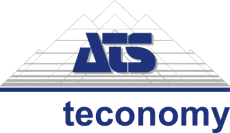
Application Testing
Keeping an application landscape manageable is a challenge in itself. Perhaps one of the most important tasks is reserved for integrated testing.
Throughout the entire lifecycle of your applications, we can support you with various test activities, such as technical testing, IT testing, security testing and acceptance testing.
We provide an in-depth description of the requirements that are placed on:
- Setting up the test environment (OTAP)
- Necessary test tools
- Setting up the (test) workspaces
A test environment is often set up based on the Dutch OTAP model. OTAP stands for development, test, acceptance and production
It is important that the test environment must be representative of the production environment, i.e. equivalent in terms of hardware, software and configuration. The environment also consists of processes and test tools, and should be available at all times. Tests should only be performed within this environment.

In order to test the applications, we make use of methods such as the Fagan Inspection. This technique involves the use of teams to track errors throughout the entire process, and is a structured way of working to improve overall levels of quality.
Phased testing
In order to successfully perform a test, we use the following phases:

